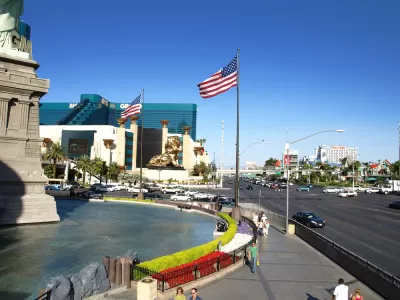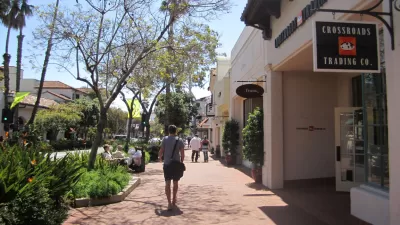Accepted by planners as a way to make buildings feel less 'crowded' and baked into many zoning codes, setbacks achieve no benefit other than giving opponents of development a bargaining chip.

"Received wisdom holds that setbacks make urban spaces feel less crowded. They supposedly ensure that buildings do not overshadow streets and sidewalks. They create the illusion of less density and protect buildings’ personal space. They create room for 'green space,' 'light,' and 'park-like settings,' which sound great in real estate listings. They assume that buildings are impositions on their cityscapes, to be contained so as not to offend delicate sensibilities."
"To the proponents of setbacks, a few patches of grass might as well be Luxembourg Gardens. But think about the classic street in any of the cities I cited above. If you enjoy Paris or New York, you already know why you shouldn’t like setbacks. Density in a city is good. And not just population density. The actual appearance of density (which may or may not have anything to do with population density, depending on the type of structure in question) is good, too."
"Setbacks are the currency of anti-development activism. Homeowners who like their cities and their property values just fine don’t care how far away a building is from a street. They’re likely only to see those buildings at 35 miles per hour anyway, and probably from a lane or two away (plus a few feet if there’s a devil strip). But they know how to push planners around."
FULL STORY: Why Cities Should Back Off of Setbacks

Manufactured Crisis: Losing the Nation’s Largest Source of Unsubsidized Affordable Housing
Manufactured housing communities have long been an affordable housing option for millions of people living in the U.S., but that affordability is disappearing rapidly. How did we get here?

Americans May Be Stuck — But Why?
Americans are moving a lot less than they once did, and that is a problem. While Yoni Applebaum, in his highly-publicized article Stuck, gets the reasons badly wrong, it's still important to ask: why are we moving so much less than before?

Research Shows More Roads = More Driving
A national study shows, once again, that increasing road supply induces additional vehicle travel, particularly over the long run.

How Protecting Kauaʻi’s Forests Safeguards Fresh Water
A University of Hawaiʻi study shows that protecting Kauaʻi’s native forests from invasive species significantly boosts groundwater recharge, making it a cost-effective strategy to secure fresh water and enhance climate resilience.

Gary, Indiana to Expand Transit Service, Bike Share
The city plans to launch a bike share system in April and expand service on its bus routes.

Pittsburgh Rolls Out Electric School Buses
Pittsburgh Public Schools has launched its first electric school buses, with plans to fully electrify its fleet over the next 14 months, aiming to create a cleaner, more sustainable transportation system supported by new charging infrastructure.
Urban Design for Planners 1: Software Tools
This six-course series explores essential urban design concepts using open source software and equips planners with the tools they need to participate fully in the urban design process.
Planning for Universal Design
Learn the tools for implementing Universal Design in planning regulations.
City of Moreno Valley
Institute for Housing and Urban Development Studies (IHS)
City of Grandview
Harvard GSD Executive Education
NYU Wagner Graduate School of Public Service
City of Cambridge, Maryland
Newport County Development Council: Connect Greater Newport





























